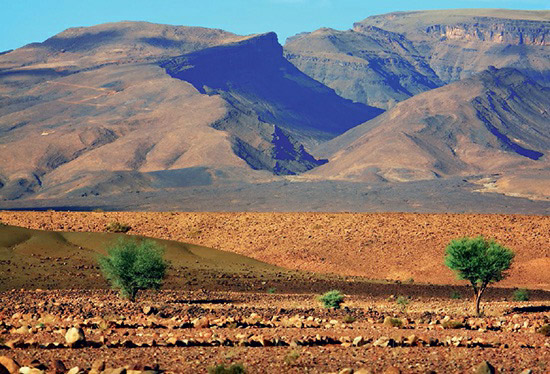The Atlas Mountains’ formation is a key geological event in Africa’s history, dating back around 300 million years. This period marked a significant continental shift where Africa’s northern margin collided with North America’s eastern margin. This event, known as the Alleghenian orogeny, resulted in massive geological changes including compression, fracturing, deformation, and uplift of the earth’s crust, forming mountains comparable to today’s Alps and Rockies.
As Africa and North America eventually drifted apart, opening up the Atlantic Ocean, the mountains that remained with North America became the Appalachian Mountains, while those staying with Africa evolved into the Atlas Mountains. This mountain range stretches primarily east-west through Morocco, Algeria, and Tunisia.
Over time, the ancient parts of the Atlas Mountains, now known as the Anti-Atlas mountains, experienced significant erosion. In more recent geological history, roughly 60-70 million years ago, the African and European plates collided, particularly the northern part of Africa with the southwestern part of the European plate. This collision led to the reactivation of mountain-building in the Atlas range, uplifting the mountains and their sedimentary and seafloor deposits to great heights. This process formed the modern High Atlas and other tall sub-ranges, with some peaks rising above 13,000 feet (4000 meters).
The African-European continental collision that shaped the High Atlas and other mountain ranges in North Africa is also believed to have influenced the formation of the modern Pyrenees and Alps in Europe and contributed to the closure of the Strait of Gibraltar, playing a role in the formation of the modern Mediterranean Sea. While there is still some uncertainty regarding the precise timing and nature of these plate motions, the Atlas Mountains stand as a testament to these complex geological processes.

